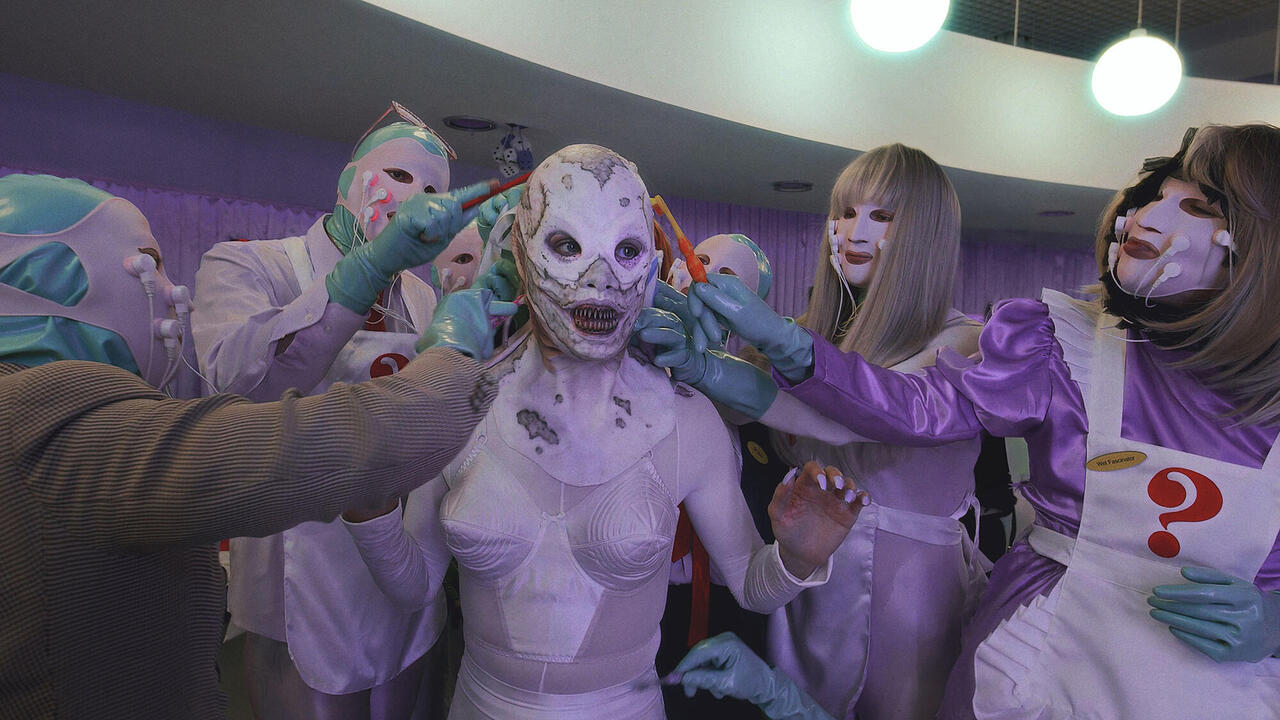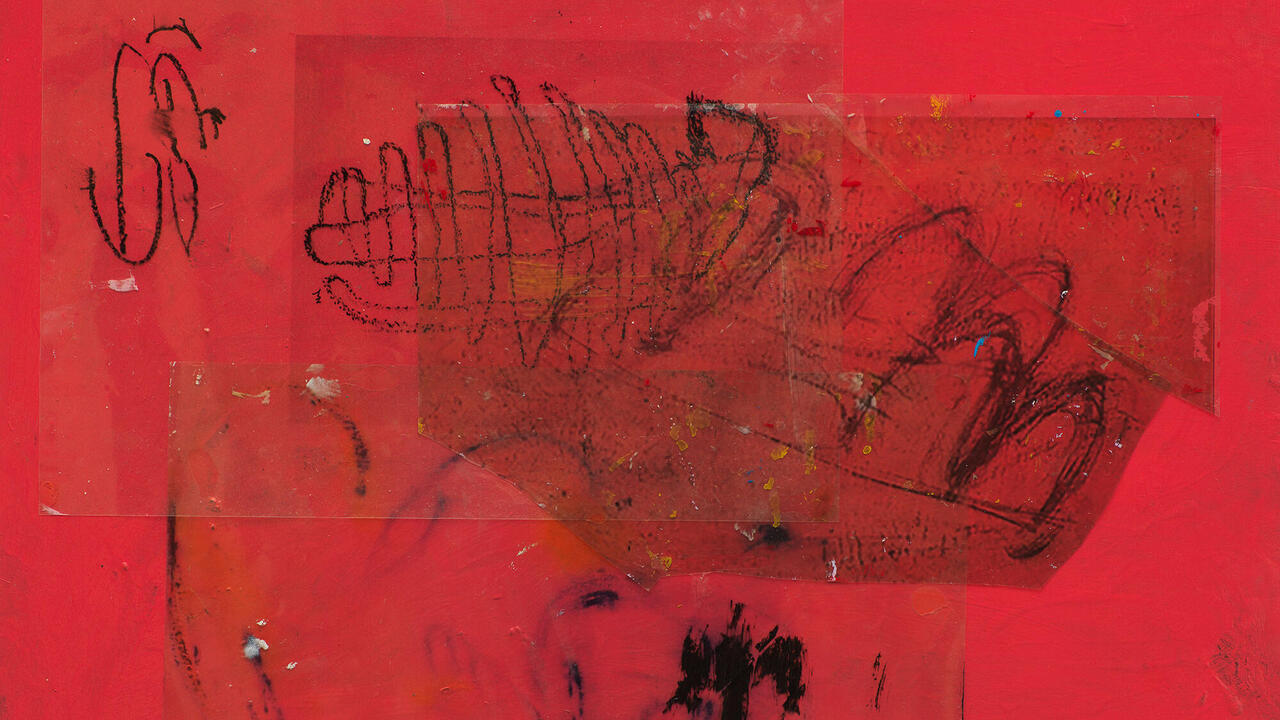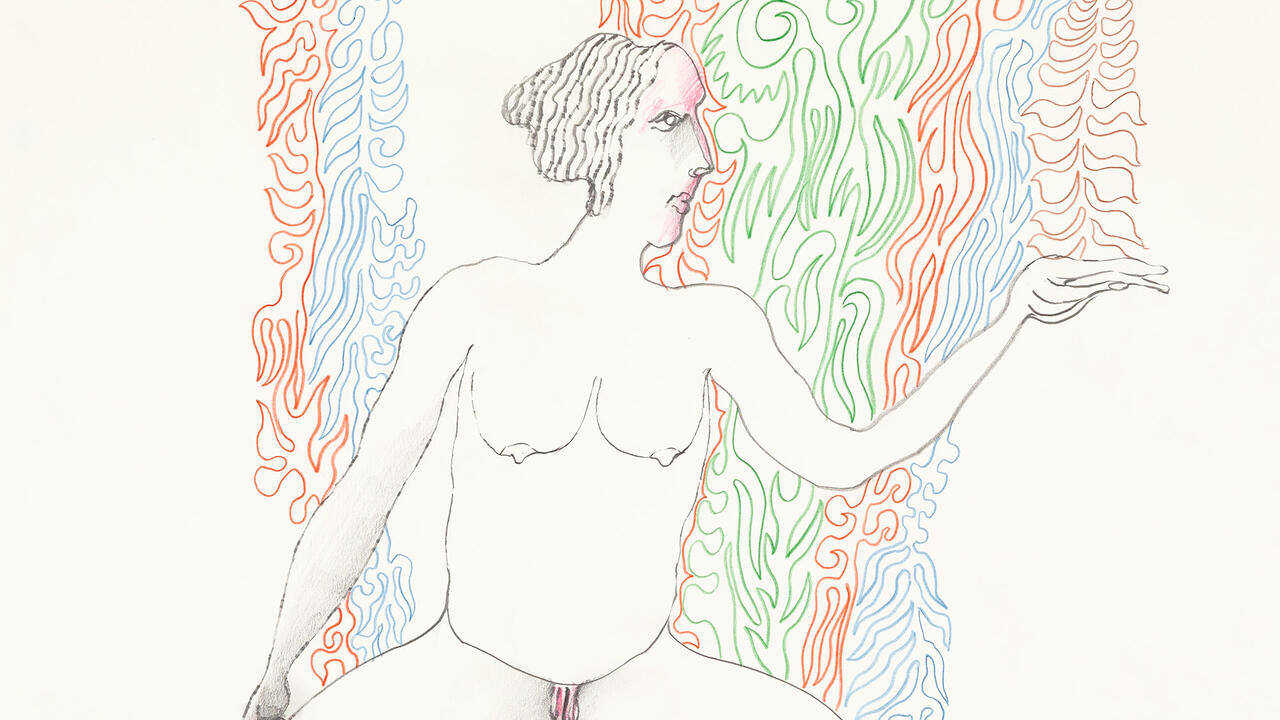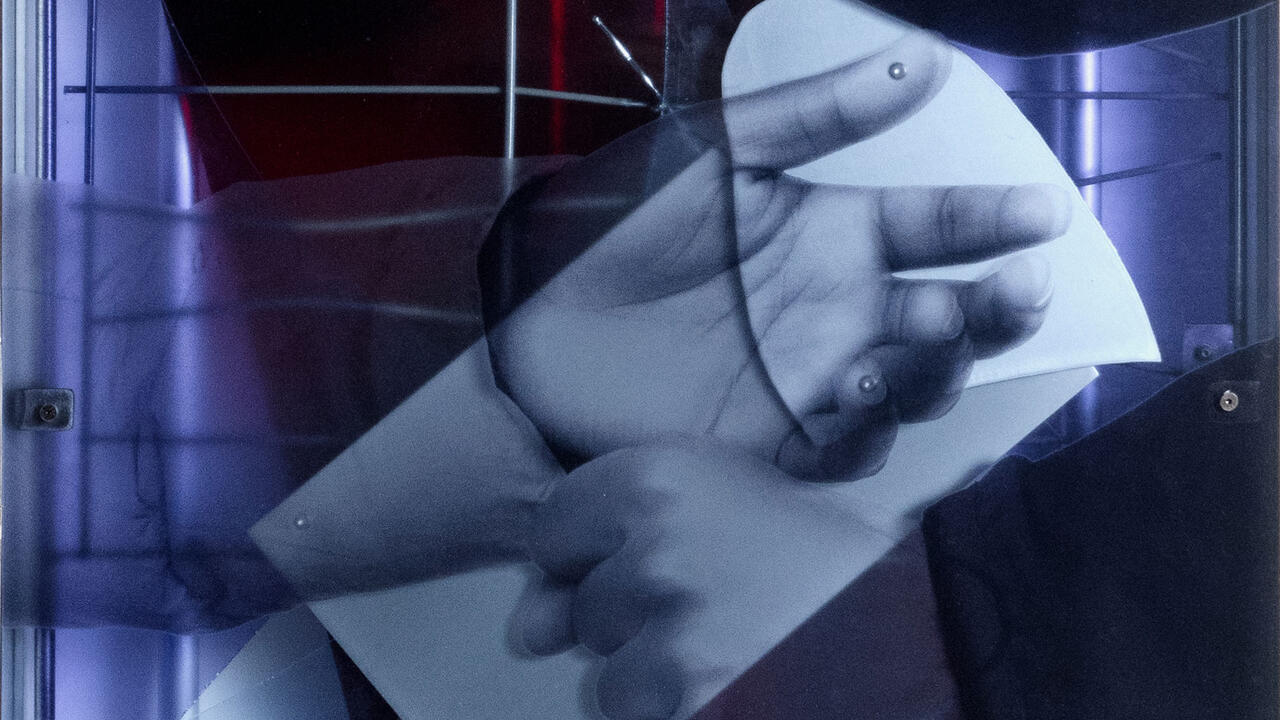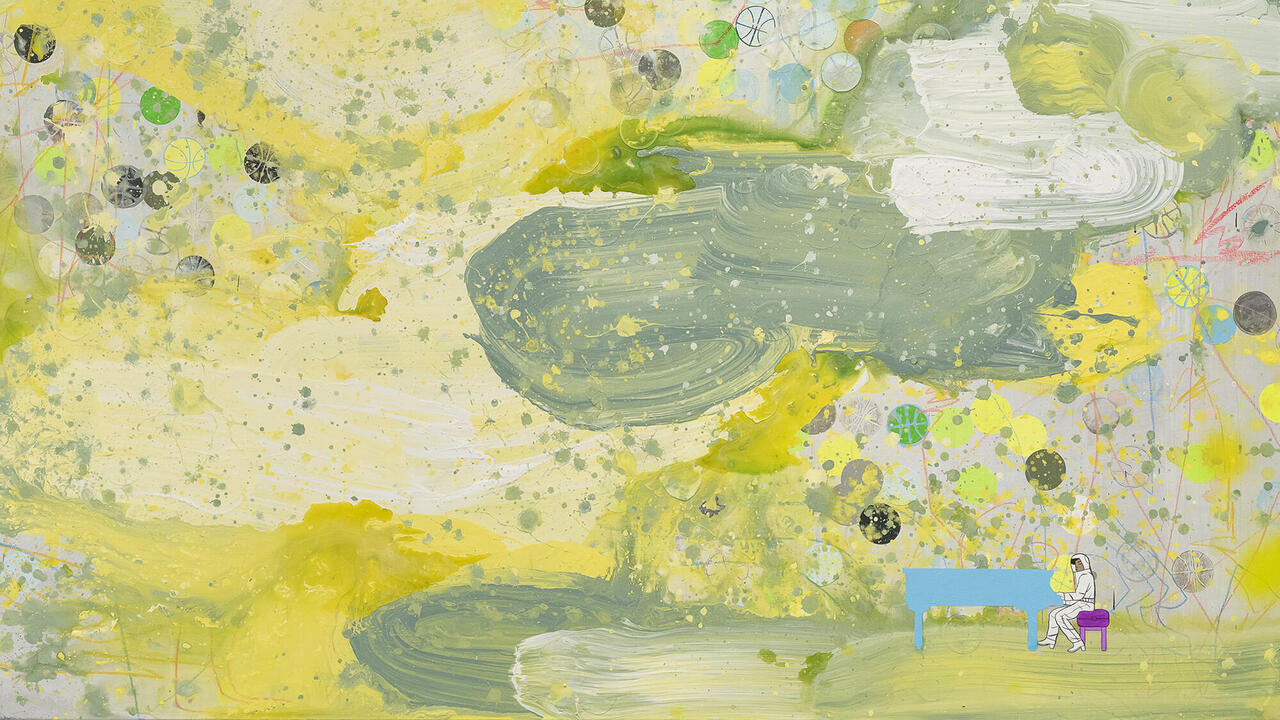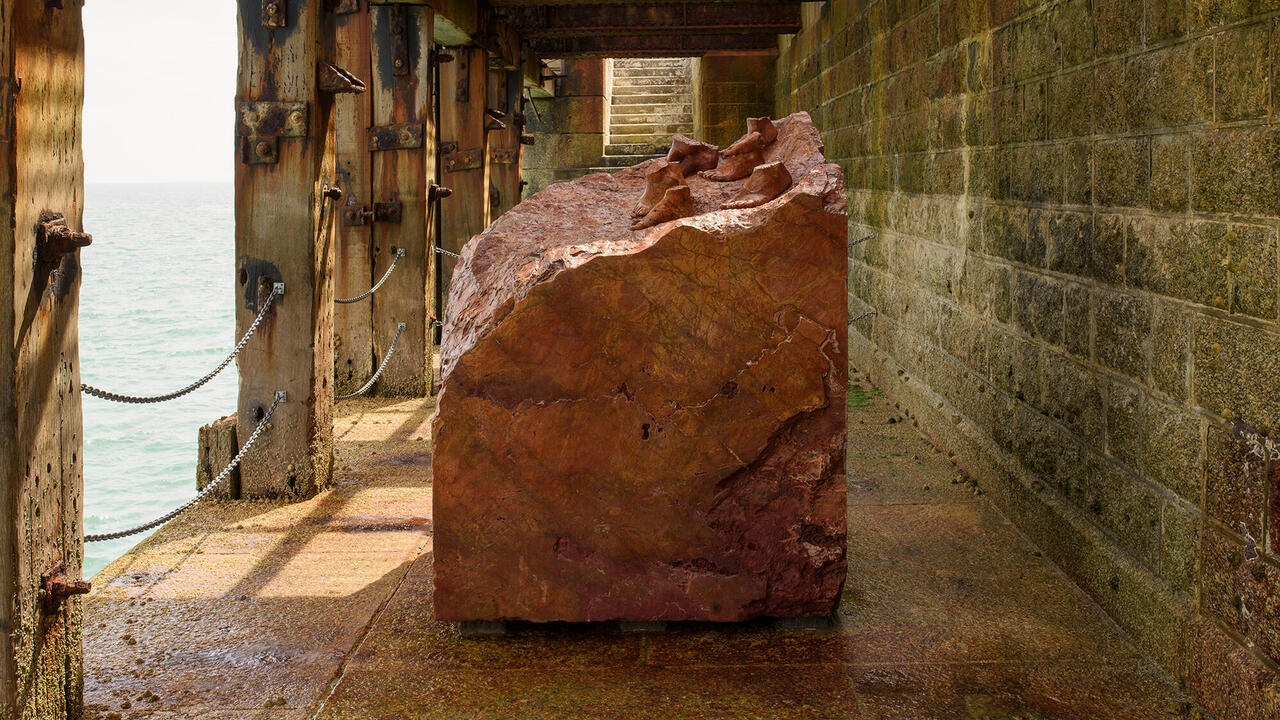Lynn Hershman Leeson Is Watching You
At Julia Stoschek Foundation, Dusseldorf, a survey of the artist’s mixed-media work explores surveillance, selfhood and technology
At Julia Stoschek Foundation, Dusseldorf, a survey of the artist’s mixed-media work explores surveillance, selfhood and technology

As I approach a pedestal, a mysterious voice says: ‘You think you’re so clever. I see you.’ Atop the plinth is a wax cast of the artist Lynn Hershman Leeson’s face, replete with a glass eye and synthetic hair. This whispering work, Paranoid (1968–2022), from the series ‘Breathing Machines’ (1965–2022), establishes the visitor as both astute observer and voyeur. Nearby, a corridor is lined with a number of black and white photocollages of women’s body parts combined with machines (from the series ‘Phantom Limb’, 1985–90); at the end, a doll sits in a vitrine, seemingly looking in my direction (CybeRoberta, 1996). Only upon nearing the doll do I realize it is actually surveilling me: her eyes have been replaced with cameras, the livestream footage from which plays on a tiny TV and is also available to view via a corresponding website.

Back in the main room is the centrepiece of the show: the artist’s pioneering, six-channel video installation The Electronic Diaries of Lynn Hershman Leeson (1984–2019). Throughout the first four videos, made between 1984 and 1997, Hershman Leeson attempts to regain control of – or at least understand – her life story. She records herself speaking directly into the camera about the abuse she endured as a child and her struggles with eating disorders and the discovery of a benign tumour in her brain. In the editing process, she interjects her own story with clips from the news; the personal is the political. Watching The Electronic Diaries, I feel an intimacy with the artist but also a sense of voyeurism – a not-unfamiliar experience in today’s influencer culture. The work is a reminder that, while screens can mirror the world, what we experience in their reflections is never an exact truth but, rather, a mediated one.

Following this installation are two further video works. Seduction of a Cyborg (1994) is a sci-fi short, screened on a vintage monitor, about a blind woman who undergoes surgery to enable her to ‘see’ via a computer. She becomes so addicted to this form of sight – controlled by those operating the computer – that her body starts to break down: her immune system fails; her hearing becomes impaired. Seduced by her ability to ‘see’ the world, while actually experiencing nothing, she all but disappears. Nearby, in a cinema room, is Shadow Stalker (2018–21), a work about the perils of predictive policing and data mining, narrated by the Spirit of the Deep Web.

While many of the works in the show deal expertly with incredibly nuanced and timely topics, the exhibition as a whole left me wanting more: namely, the full-scale versions. Shadow Stalker, for instance, is part of a larger installation that includes a performance and a website, neither of which are documented – or visually alluded to – here. The image from which the show takes its name (Are Our Eyes Targets?, 1984) is a still from Deep Contact (1984–89), the world’s first-ever interactive videodisk installation, also nowhere to be found. Meanwhile, CybeRoberta’s name and outfit directly reference one of Hershman Leeson’s most iconic projects: her assumption of the alter-ego Roberta Breitmore as part of an eponymous performance (1973–ongoing), which likewise isn’t featured.

This interconnected network of references, however, is also the power of Hershman Leeson’s work. For more than five decades, she has spun webs so dense and so entangled that they are not easily unravelled. To show one work necessitates another – just as any discussion of, say, privacy today necessitates conversations around conceptions of surveillance, selfhood, technology, data and so forth. The list goes on, and the feedback loop continues ad infinitum.
‘Lynn Hershman Leeson: Are Our Eyes Targets?’ is on view at The Julia Stoschek Foundation, Dusseldorf, until 2 February 2025
Main image: Lynn Hershman Leeson, CybeRoberta, 1996, installation view. Courtesy: the artist; photograph: Alwin Lay











